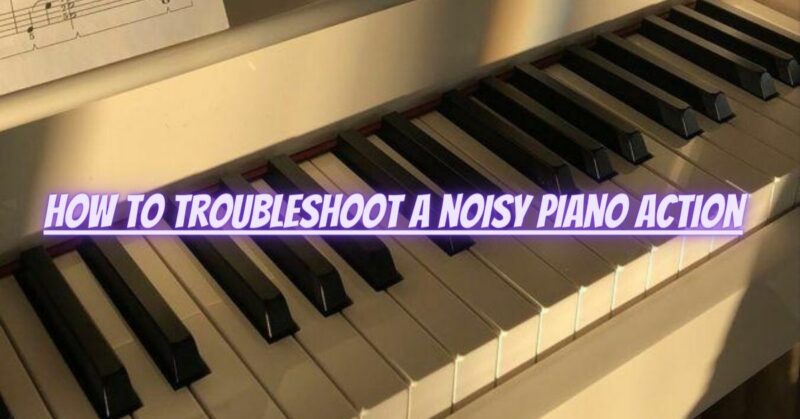A noisy piano action can be distracting and may interfere with your playing experience. Identifying and troubleshooting the source of the noise is essential for maintaining the instrument’s optimal performance. Here are some steps to troubleshoot and address a noisy piano action:
- Inspect for Loose Parts: Carefully examine the piano action for any loose or damaged parts. Check the action brackets, screws, and flanges to ensure they are secure and not rattling or moving excessively.
- Clean the Action: Dust and debris can accumulate within the piano action and cause noise. Use a soft brush or compressed air to clean the action thoroughly, paying attention to the hammers, dampers, and other moving parts.
- Check the Hammer Felt: Inspect the hammer felt for wear or damage. Worn-out hammer felt can produce unwanted noise. If the felt is significantly worn, consider having it voiced or replaced by a professional technician.
- Lubricate the Action: Apply a small amount of piano action lubricant to specific parts of the action, such as the flanges and pivot points. Avoid using household lubricants, as they may damage the action. Consult a piano technician for guidance on appropriate lubricants.
- Regulate the Action: Misaligned or poorly regulated action parts can cause noise. Schedule a regulation service by a qualified piano technician to ensure that the action parts are properly aligned and adjusted.
- Check Damper Felt and Regulation: The damper felt can also cause noise if it is misaligned or damaged. Verify that the dampers are properly regulated and aligned with the strings to prevent any unnecessary vibrations or noise.
- Examine the Pedals: Inspect the pedals for any loose or rattling components. Tighten any loose screws or nuts to reduce pedal noise.
- Monitor Environmental Conditions: Changes in temperature and humidity can affect the piano action, causing noise. Keep the piano in a stable environment with controlled humidity levels to minimize the impact of weather-related changes.
- Seek Professional Assistance: If the noise persists or if you are unsure about identifying and addressing the issue, consult a qualified piano technician. A technician has the expertise and experience to diagnose and fix the problem effectively.
- Regular Maintenance: Perform regular maintenance and tuning of the piano to keep the action in optimal condition. Regular servicing can help prevent issues before they become more significant problems.
Remember that the piano action is a complex mechanism with many moving parts, and addressing noise issues may require specialized knowledge and tools. Attempting to fix complex problems without the proper expertise can lead to further damage. Therefore, it is advisable to seek the assistance of a professional piano technician for troubleshooting and resolving any noisy piano action issues effectively and safely.


